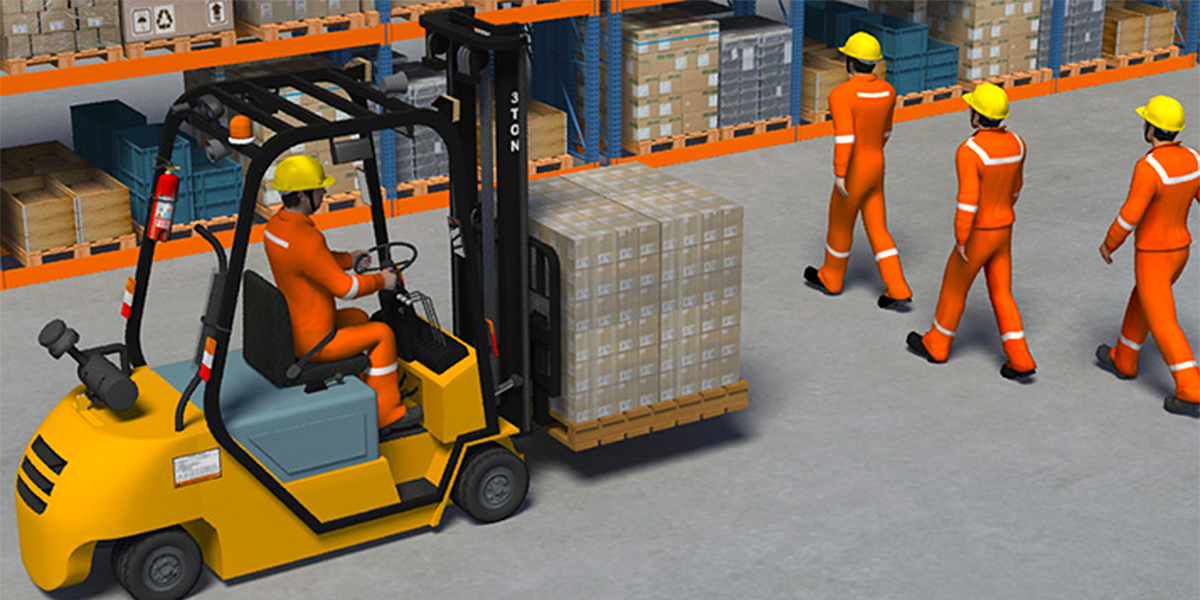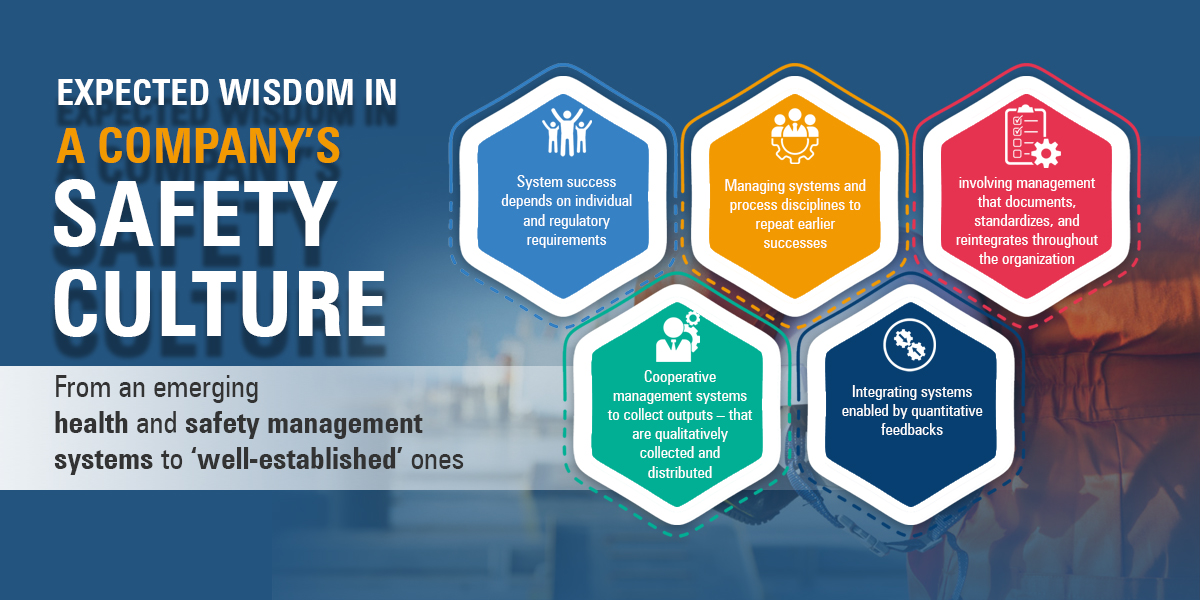Forklift pedestrian safety – is it worth training for?

Are parking lots or busy streets the only source of accidents and injuries?
Do you need to sweat to find out other such areas where safety remains prime?
If we mention forklift and point out the fact that forklift accidents are more than 20,000 per year, instead of gushing over them, it’s important that we take the necessary safeguards to duck and evade them, totally.
According to statistics, a forklift driver is more likely to cause the death of a co-worker than themselves in an accident (NIOSH Statistics).
When you think about the following scenario, the statement makes sense:
An average-sized forklift (9,000 lbs) with a forklift operator inside is moving at top speeds of 6 to 12 mph while carrying a large cargo. The pedestrian is defenceless and exposed.
Who has the RIGHT OF WAY in forklift pedestrian safety?
The pedestrian! Yes, he deserves his life! And safe ways of working. That concludes operators being on a constant alert. Basic understanding of operation is anticipated from them – simple slowing down when at doorways or intersections or any type of blind spots.
Some basic cooperation from the pedestrian is anticipated – for his behaviour influences the working ways, too. When an operator approaches while slowing down and blows the horn, achieving the attention is the foremost for them. But if the pedestrian is unaware, forklift should simply be stopped.
Any other stats that support these?
The tools used in the warehouse or on the job site are a crucial component of a safety management programme. Understanding how forklift design has changed in terms of safety is enlightening.
Forklifts must adhere to ANSI/Industrial Truck Standards Development Foundation (ITSDF) standards and fulfil the requirements of OSHA 29 CFR Section 1910.178 to operate legally in the United States. Similar rules and laws exist in other nations. Forklift safety is governed by these norms and laws, but some manufacturers have gone above and beyond mere compliance.
Utilizing technology to assist operators in staying focused and lowering the likelihood of mistakes is now the standard because of research into safety-related concerns from the perspective of an operator and ongoing product design innovation.
Reducing operator fatigue and drowsiness
The science of ergonomics involves creating goods that allow users to engage with them in the intended setting safely and effectively.
In the case of forklifts, this is about constructing the machine around the way the operators operate it as opposed to requiring them to modify their work practices to fit the vehicle’s design. Operators are more likely to incur extra weariness because of having to make up for poor design, which can eventually raise the risk of accidents.
Increased Visibility
For several goods, operator sightlines have been improved. This can lessen the risk of mishaps that might otherwise be brought on by blocked perspectives.
Keeping Concentration
Forklift manufacturers have been able to provide a more educational and individualized experience for customers by switching to interactive, adjustable on-board screen displays.
Improving Forklift Performance
Forklifts are being equipped with a range of digital sensors and technologies to help reinforce safe operating procedures. Depending on the manufacturer’s ability to use real-time operating data, several control capabilities are available. Even the most experienced operators can enhance their approach to safety with the assistance of Crown’s stability, traction, and operator position controls.
In addition to their regular duties, forklift operators have two important responsibilities to consider: their own safety and the protection of pedestrians around their workplaces.
Forklifts, after all, may weigh up to 9,000 lbs on average, and certain models can reach much higher weights. This is roughly three to four times the weight of a car. Overseeing that much weight is a heavy burden. The risk to pedestrians could, however, be reduced if non-operators adopt easy safety measures when strolling near forklift usage.
In the end, it’s about creating a culture of awareness and communication that keeps everyone secure in any setting.
Here are some suggestions for making your workspace potentially safer.
Opting for animation video training for the facility
Every effort you place in, is worth it, if the final outlook to safety is saving someone’s life.
Plus, every training you consider is worth learning the skills and the suggestions.
In this case, it is forklift safety, and when animated videos are a medium to shift the information delivery from the traditional methods to something more virtual, handling, and close to the real-world scenarios, you receive nothing less than the following –
- Determine the risks associated with using forklifts.
- Recognize the dangers that increase your chance of an accident
- Describe the site control measures
- Use safe work procedures.
- Report dangerous circumstances and injuries.
It’s the key idea that is of utmost consideration when hazardous scenarios need to be ruled out from the workspace. Key deliverables that one can expect when the training nears completion are –
Forklift hazard awareness to pedestrians include being run over by a forklift, being struck by a forklift or an object that is falling, being stuck between a forklift and an object, falling off a forklift, fires, and chemical burns.
Forklift plus pedestrian incidents are more likely when there are impediments in the aisles and blocked lines of sight.
A jobsite safety measure that helps shield pedestrians from forklift contact is the posting of a danger or caution sign.
Safe work practices to avoid accidents when a forklift gives way to pedestrians.
Accident reports can be used to fix issues and stop injuries from happening again.

Training for Operators and Pedestrians
Pedestrians should be given the right of way by drivers: All forklift operators should be aware of this OSHA recommendation. Operators should pause and wait for pedestrians to leave the area before continuing along their route cautiously due to the size and power of the forklift.
Never presume that a forklift operator sees you, pedestrians!
It always does not guarantee that an operator will always see them. Anytime a pedestrian is near a moving forklift, they should keep an eye on it.
Clearly defined hand signals should be used for communication between drivers and pedestrians
Creating a system of hand signals can help to improve awareness and communication.
For example, a pedestrian should always point in the direction they plan to travel in a building. An operator should also use their hand to indicate which way to turn. To prevent confusion, it’s critical to make sure that everyone who works with you and any guests understand your communication strategy.
When using a forklift, operators must adhere to the following OSHA regulations: Operators also need to be taught to deal with a variety of situations to lower the chance of accidents, so it is not simply the pedestrian’s duty.
At junctions, be sure to stop, sound the horn, and drive slowly to alert pedestrians of the forklift’s presence.
Every movement, including braking, should be regulated, and executed smoothly.
Use a spotter if your vision is bad and go backwards if a weight is obstructing your view forward. Tips for safe operation particular to your forklift are provided in your operator’s manual. Ensure you have read and comprehended these instructions before using your forklift.
Final thoughts
But any decision taken in haste and under influence may incur bad result.
And you would, of course not be wanting that!
What you would need is a comprehensive evaluation of your facility, your equipment, your employee behavior, and approach – that involves both, operators, and the pedestrians.
Any training that is specific to the needs and cater to their individual experience is more relatable to the output you always desire.
After all, it is the matter of protecting your employees and assets, and it’s not worth-taking risk for, isn’t it?



I totally agree when you said that the operators of forklifts should follow the regulations of the OSHA such as learning how to deal with situations like reducing accidents with pedestrians. I hope that most workers would be trained with that as well, because there might be clients in the warehouse they are working at or civilians passing by near the site they are in. So they have to actually be careful with the heavy loads they are transferring from one area to another.
Thanks for sharing this wonderful article.